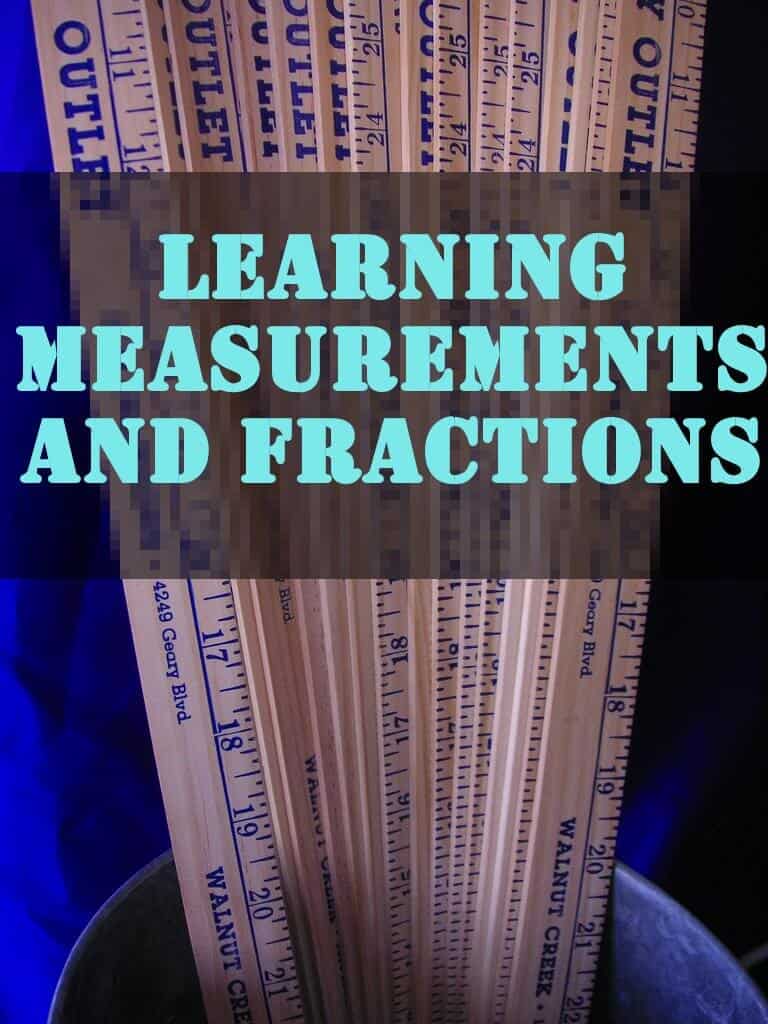How to Make and Use Math Manipulatives for Learning Measurement and Fractions

This is the third installment of Education Tools! How to Make and Use Math Manipulatives for Learning Measurement and Fractions
Easy, Inexpensive Ideas for Making Math Manipulatives to Teach Children to Understand Measurements and Fractions
When teaching a child measurement, nothing can beat good old-fashioned rulers and yard sticks. Try to collect a few different measuring sticks, for both American standard measurements and the metric system. If you can't find any measuring sticks, I use a really awesome 36" aluminum stick that has American and metric markings. I believe it is still available through Amazon prime: Alumicolor 36" Aluminum Yardstick.
Grasping concepts of comparative measurements is easier for a child when they can actually measure objects with their own hands. Assign them a list of objects in your home or classroom to measure. Ask which unit of measurement is best for each object.
If you're using both American standard and the metric system, have them measure things first by inches and then by centimeters, or first by feet or yards and then by meters, and ask them to compare. For further comparison, cut twine into various lengths, lay the lengths of twine side by side on the floor, and ask the children to measure and compare.
Use a tape measure or long rolls of twine or rope to help children really understand the size of things they can't measure for themselves.
For example
How long is a blue whale?
A sky scraper?
An anaconda?
Measure a piece of twine to equal the length of the object (for example, a blue whale is approximately 100 feet long, so use a 100-foot long spool of twine). Go to a spacious area, such as a park or ball field not in use. Hold one end, then give your child the roll and ask them to keep walking away from you until it is unrolled. By seeing how far away from each other you are, he will be able to really conceptualize large measurements such as 100 feet, or 30 meters, might be.
Add some kitchen measuring cups, spoons, droppers, and scales to your math manipulative collections. These are very helpful in introducing simple fractions to children. For liquid measurements, empty containers that hold a cup, a quart, a half gallon, a gallon, and, if you have it, a five or ten-gallon bucket.
Children often enjoy cooking or working with recipes to make things such as clay or slime. Use a simple snack, drink or craft recipe, along with measuring tools to introduce the concept of double, triple, halves, thirds or quarters. At first, let them learn to measure out ingredients. Show them the difference between a teaspoon and a tablespoon, 1/3 cup and 1/4 cup, a quart and a gallon.
Move onto having them see how many units of one measurement can be held in another.
How many tablespoons are in a quarter of a cup?
How many quarter cups in a full cup?
How many cups in a pint?
Pints in a quart?
Quarts in a half gallon or gallon?
This can be done in the sink, or even the bath tub, for fun, but the concept of measuring units will begin to take hold.
Then have them calculate how much they would need if they doubled a recipe, or cut it in half. This is an easy way to help them visualize adding, subtracting, dividing and multiplying fractions. For reinforcement, show them how to work out the same problem on paper.
To show that fractions are not always from circular objects or cut into pie-shaped pieces, move on to index cards. Cut each card into a different amount of equivalent shapes. Begin adding, subtracting and comparing once again, this time with rectangular and square-shaped pieces.
Another simple fraction manipulative is a paper plate, or round piece of cardboard. Divide with a ruler and pencil and cut into triangular sections like you would a pizza pie. Cut several plates into different measurements- halves, thirds, quarters, fifths, sixths, eights, and more. Teach children to name the fractions, and how they get their name.
For example, fourths are named because one piece is cut into four sections. 1/4 is named because it is one out of four sections that make up the whole. Show the child how to add and subtract fractions, and how to compare- for example, is 2/4 larger, smaller or the same (equivalent) as 4/8? Work both on paper as well as with the manipulatvies.







Leave a Reply